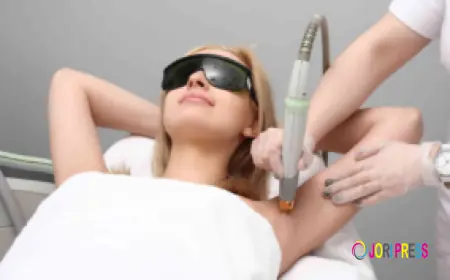Top Real-World Examples of Software as a Medical Device (SaMD) in Healthcare
The healthcare industry is evolving rapidly, driven by digital innovation. At the forefront of this change is Software as a Medical Device (SaMD)—standalone software designed to perform medical functions without relying on dedicated hardware.

Introduction
The healthcare industry is evolving rapidly, driven by digital innovation. At the forefront of this change is Software as a Medical Device (SaMD)—standalone software designed to perform medical functions without relying on dedicated hardware. Unlike traditional devices, SaMD solutions leverage artificial intelligence (AI), cloud computing, and data analytics to support diagnosis, treatment, and disease management.
While the concept may seem futuristic, SaMD is already being used across hospitals, clinics, and even patients’ smartphones. These real-world applications are proof that software alone can save lives, reduce costs, and improve patient outcomes. In this blog, we’ll explore some of the most impactful examples of SaMD in healthcare today.
What Makes a Software a Medical Device?
According to the International Medical Device Regulators Forum (IMDRF), SaMD is defined as “software intended to be used for medical purposes that perform these purposes without being part of a hardware medical device.”
Key characteristics include:
- Independence: Functions without needing specialized hardware.
- Medical purpose: Supports prevention, diagnosis, monitoring, or treatment.
- Regulated: Must meet stringent safety, efficacy, and compliance standards.
With these principles, let’s look at how SaMD is being used in real-world healthcare.
1. AI-Powered Radiology Software
Radiology is one of the fields most transformed by SaMD.
- Example: Aidoc – FDA-approved SaMD that analyzes CT scans to detect critical conditions like intracranial hemorrhage, pulmonary embolism, and cervical spine fractures.
- Impact: Radiologists can review urgent cases faster, reducing diagnostic delays and improving patient survival rates.
By supporting radiologists, such software reduces burnout and improves efficiency in overburdened imaging departments.
2. Digital Pathology Solutions
Pathology labs generate vast amounts of image data. SaMD solutions bring AI-powered insights to this space.
- Example: Paige.AI – FDA-cleared SaMD that assists pathologists in identifying cancerous tissue on digital slides.
- Impact: Provides faster, more accurate cancer detection, which is critical for early treatment and improved patient outcomes.
This technology enhances precision in oncology, where every minute counts.
3. Cardiac Monitoring Applications
Cardiovascular diseases are the leading cause of death worldwide. SaMD is helping patients and clinicians detect issues earlier.
- Example: Apple Heart Study (Apple Watch ECG app) – FDA-cleared app that detects atrial fibrillation (AFib), a condition that increases stroke risk.
- Impact: Millions of users worldwide have been alerted to potentially life-threatening conditions, prompting timely medical intervention.
By enabling continuous monitoring outside hospitals, SaMD empowers patients to manage their heart health proactively.
4. Diabetes Management Platforms
Diabetes management is being revolutionized through real-time monitoring and insulin adjustment software.
- Example: Dexcom Clarity – A SaMD solution that integrates with continuous glucose monitoring (CGM) devices to provide trends, alerts, and insights.
- Example: Tidepool Loop – An FDA-approved app that helps automate insulin dosing decisions based on glucose readings.
- Impact: Patients gain better glucose control, fewer complications, and an improved quality of life.
Such tools embody the shift from reactive care to proactive disease management.
5. Digital Therapeutics for Mental Health
Mental health disorders often face barriers of stigma and limited access to professionals. SaMD is helping to close that gap.
- Example: reSET® and reSET-O® by Pear Therapeutics – FDA-cleared digital therapeutics for substance use disorder and opioid use disorder.
- Example: SilverCloud Health – A digital platform offering CBT-based therapy for anxiety and depression.
- Impact: Delivers accessible, evidence-based therapy at scale, supporting patients between clinical visits or in underserved regions.
This democratization of therapy is especially valuable in regions with limited access to psychologists or psychiatrists.
6. Ophthalmology Diagnostic Software
Eye diseases like diabetic retinopathy often go undetected until vision is irreparably damaged. SaMD tools are addressing this challenge.
- Example: IDx-DR – FDA-approved autonomous AI system that detects diabetic retinopathy from retinal images.
- Impact: Primary care providers can now diagnose eye diseases without needing a specialist, enabling earlier intervention and preventing blindness.
This showcases how SaMD can extend specialist-level diagnostics to primary care settings.
7. Sepsis Detection and Hospital Monitoring
Sepsis is a life-threatening condition that requires immediate intervention. SaMD solutions are proving critical in early detection.
- Example: Sepsis Watch by Duke Health – An AI-powered SaMD that analyzes patient data to predict sepsis risk.
- Impact: Allows clinicians to intervene earlier, reducing mortality rates and ICU stays.
Hospital-based SaMD tools like this optimize workflows while saving lives.
8. Stroke Detection Tools
In stroke care, time equals brain—every second counts. SaMD platforms are accelerating diagnosis.
- Example: Viz.AI – FDA-cleared SaMD that uses AI to analyze CT scans for large vessel occlusion strokes. It alerts specialists in real time.
- Impact: Drastically reduces time-to-treatment, improving chances of recovery and reducing long-term disability.
Such tools bring unprecedented speed to emergency medicine.
9. Dermatology AI Applications
Skin conditions affect millions, and dermatologists are often scarce in many regions.
- Example: SkinVision – CE-marked SaMD that analyzes skin lesions for cancer risk using smartphone images.
- Impact: Empowers individuals to monitor skin changes and seek medical advice early, leading to earlier diagnosis of melanoma.
This democratizes access to dermatology expertise globally.
10. Virtual Rehabilitation Platforms
Patients recovering from strokes, orthopedic surgeries, or neurological disorders benefit from SaMD-driven virtual rehabilitation.
- Example: Kaia Health – FDA-registered SaMD providing digital therapy for chronic back pain through guided exercises and AI coaching.
- Impact: Increases adherence to rehabilitation programs, reduces hospital readmissions, and provides cost-effective care at home.
Rehabilitation is becoming more accessible, engaging, and personalized.
Benefits of SaMD in Real-World Healthcare
- For Patients: Early detection, greater accessibility, personalized treatment plans, and better disease management.
- For Clinicians: Augmented decision-making, reduced diagnostic errors, and improved efficiency.
- For Healthcare Systems: Lower costs, reduced hospital readmissions, and optimized resource allocation.
- For Pharma & MedTech: Opportunities for companion apps, digital therapeutics, and hybrid device-software models.
Challenges of Deploying SaMD in Practice
While these examples highlight SaMD’s impact, adoption isn’t without obstacles:
- Regulatory hurdles – Approvals vary across geographies.
- Data security risks – Patient privacy must be safeguarded.
- Interoperability issues – Integration with EHRs and hospital IT systems remains a challenge.
- Clinical trust – Healthcare providers need confidence in AI recommendations.
- Reimbursement models – Clear insurance frameworks for SaMD are still evolving.
Addressing these challenges is crucial to ensure SaMD scales safely and effectively.
The Future Outlook of SaMD
Looking ahead, SaMD will only grow more powerful and widespread:
- AI and predictive analytics will expand preventive care.
- Wearables and IoT devices will feed real-time data into SaMD platforms.
- Blockchain will secure sensitive health data exchange.
- Global harmonization of regulations will enable faster rollouts worldwide.
- Integration with robotics, AR/VR will transform surgical assistance and remote rehabilitation.
SaMD is no longer experimental—it’s shaping the very future of medicine.
What's Your Reaction?
 Like
0
Like
0
 Dislike
0
Dislike
0
 Love
0
Love
0
 Funny
0
Funny
0
 Angry
0
Angry
0
 Sad
0
Sad
0
 Wow
0
Wow
0


















































